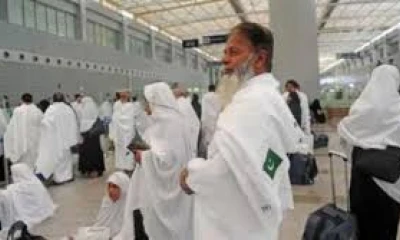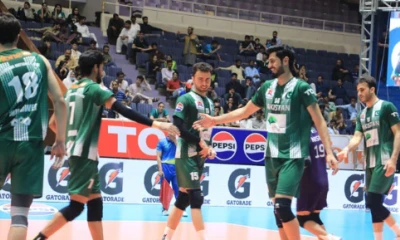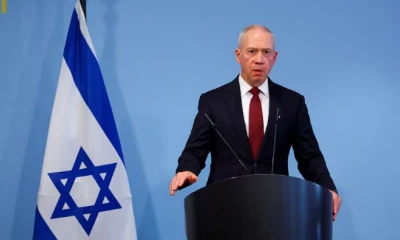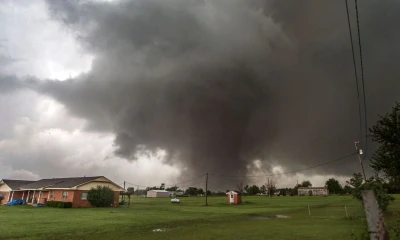-


Toshakhana Case | Big Relief | Breaking News | GNN
-


سندھ ہائیکورٹ میدان میں #gnn #sindhhighcourt #police #news #breaking #latest #video
-


مزید 29 وکٹیں گر گئیں #gnn #punjabgovernment #lawofficer #news #breaking #latest #video
-


عمران خان نے فائنل فیصلہ سنا دیا #gnn #sherafzalmarawat #pti #imrankhan #news #breaking #latest
Regional
Something weird is happening with tornadoes
Tornadoes are becoming more common outside the Great Plains and clusters are happening more, too.

Tornado season is here again, with twisters striking in Indiana, Pennsylvania, and Florida over the past few weeks. But while severe storms in spring are nothing new, there have been subtle changes in tornado patterns in recent years that portend a more dangerous future for communities across the country.
According to a preliminary count from the National Centers for Environmental Information, there have been 547 tornadoes documented from January through April 2024. That figure is higher than the year-to-date average — 338 — the organization calculated between 1991 and 2020 but in line with the number observed in 2022 and 2023 in the same time frame.
And even as the number of tornadoes has stayed relatively consistent in the last few years, experts say there have been key changes in their behavior over time that could have major consequences.
More tornadoes are now concentrated in fewer days, meaning they are less spread out and there’s a higher number occurring on the same day, according to a 2019 study published in Theoretical and Applied Climatology. A growing number of tornadoes are also occurring in the southeastern part of the US in addition to the Great Plains, where they have been historically most common.
There’s still a lot experts don’t know about why both these trends are occurring and it’s not clear if climate change is playing a role. What is more certain is that these shifts mean people will have to prepare for these natural disasters in new ways, with some communities enduring more severe storms in rapid succession and others being forced to build infrastructure for tornadoes they had rarely experienced before.
What we do — and don’t — know about why this is happening
Scientists have some information about why there are more concentrated tornadoes, or clustering, and why the locations of tornadoes have shifted slightly. With clustering, it’s tied to the presence of atmospheric and wind conditions that fuel dozens of tornadoes at once. And with changes in geography, it’s related to parts of the country drying out while other areas are seeing more rain.
The increase in tornado clustering has been observed since the 1980s and continues into present day, says Tyler Fricker, an author of the 2019 study on the subject. According to that study, while 11 percent of tornadoes occurred on days when there were 20 or more tornadoes from 1950 to 1970, now 29 percent of them do. The prevalence of low-pressure systems, warm moist environments, and high wind shear (changes in speed and direction of wind combined with height) all come together to fuel these clusters.
“We are seeing a reduction in the total number of days where there are tornadoes, but those that do occur are almost ‘supercharged,’ producing substantially more tornadoes than what we would otherwise expect,” says Jana Houser, an atmospheric scientist at Ohio State University.
What’s still unknown is whether such shifts are related to climate change as the Earth has gotten warmer due to human-generated greenhouse gases.
“It’s hard to pull out the different trends — maybe the natural variations are impacting tornadoes, maybe the broader climate change, maybe it’s a combination of both,” says Jase Bernhardt, a climatologist at Hofstra University. “We want more research done to understand why it’s happening.”
Experts similarly have some sense of why tornado geography has shifted, though they’re still working to untangle the factors involved.
Environmental conditions in the last few decades, for instance, have made the southeastern parts of the US more conducive to tornado formation. And as the Great Plains dry out more and parts of the Midwest and Southeast experience increases in precipitation, that’s made the latter regions more susceptible to tornadoes, Bernhardt says.
“Tornado Alley” is historically the corridor that runs from South Dakota south through Iowa to Oklahoma and Texas. Increasingly, scientists have noticed larger numbers of tornadoes occurring eastward in places including Tennessee, which is part of a collection of southern states known as “Dixie Alley.” According to a 2018 study from the National Oceanic and Atmospheric Administration, more tornadoes were starting to emerge in the Midwest and Southeast as they simultaneously declined in the Great Plains.
Concentrated tornado days could have consequences
These shifts in tornado patterns could have serious consequences for the communities that they affect.
When many tornadoes happen in one day, people may get buffeted with natural disasters and have to anticipate multiple events in a short period of time. That presents a challenge for forecasters, who have to put out rapid-fire alerts in a condensed window, says Fricker. People in the affected areas also have to prepare for a quick series of storms and ensure that they have shelter and supplies to endure all of them.
“You might have waves of these storms coming through your area, which means you can’t just be on for an hour or two, you kind of have to be on for the entirety of that day,” says Fricker. “And so from a human and from a property perspective, outbreaks are more likely to be disruptive, and they’re more difficult to really prepare for ... because there’s so much more going on.”
Changes in the geographic distribution of tornadoes could also lead to long-term effects on larger population centers, and force communities that never had to worry about tornadoes previously to shore up their infrastructure.
“As tornadoes leave the great wide open of the Plains, they will encroach on places where more people live, often in mobile homes and other structures that aren’t prepared for them,” Mark Gongloff writes for Bloomberg. “Policymakers need to help vulnerable people prepare for a potentially more dangerous future and ensure that infrastructure and housing can better withstand whatever nature brings.”
Broadly, scientists’ research can help new areas of the country make preparations as they anticipate more tornadoes down the line. Doing so effectively, however, could require more support for the Federal Emergency Management Agency (FEMA), which doles out funds for rebuilding and preparation efforts. As Scientific American reports, FEMA’s disaster relief fund is due to run out of money partway through the year, a shortfall that also existed in 2023, which led to the agency putting thousands of projects on hold.
“Given the trend toward increasing tornadoes in areas outside the traditional ‘tornado alley,’” Houser says, “people need to be on their guard in areas that may not have normally expected to see tornadoes.“
Pakistan
PM Shehbaz to visit Azad Kashmir today
Important announcements are expected regarding the demands recognised during the protests in Azad Kashmir in recent days
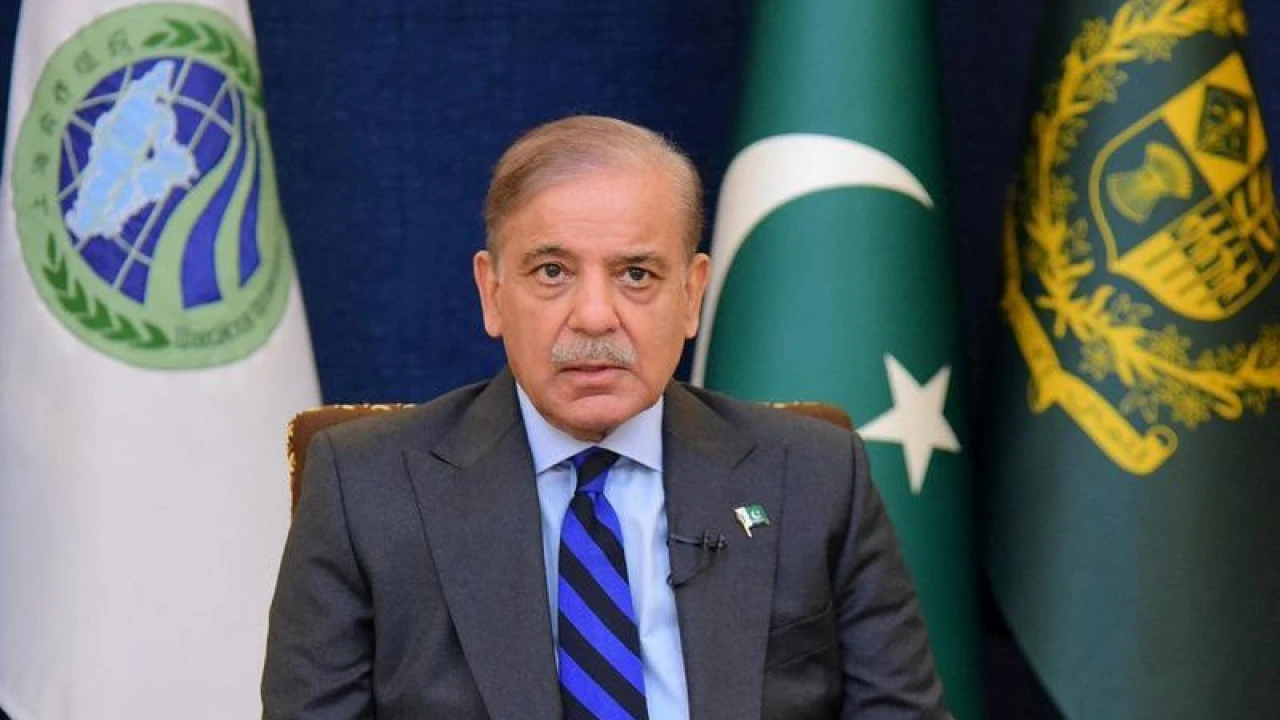
Islamabad: Prime Minister Shehbaz Sharif will visit Azad Kashmir today (Thursday).
Federal Ministers will also accompany the Prime Minister. Important announcements are expected regarding the demands recognised during the protests in Azad Kashmir in recent days.
Shehbaz Sharif will meet with the Prime Minister of Azad Kashmir and Cabinet members. During the meeting, it will be advised to adopt a common strategy to avoid any major conflict in the future.
Prime Minister will also inspect the Neelum Jhelum project, apart from which he will be briefed on the recent protests in Azad Kashmir.
It is pertinent to note that during the ongoing protest and strike for the supply of low-cost electricity and flour in Azad Kashmir for the last three days, the angry protesters and the police had come face to face, during which the police fired tear gas in response to stone pelting.
Sports
Tom Thibodeau finally found common cause with Knicks. Will it be enough?
New York has stunned foes with ferocity that mimics its coach's mindset. But will fatigue finally catch up?

Trust the pass, he tells them, and so they do. Fight like hell, he tells them, and so they do. Get better every day, he tells them, and so they do.
Three or four of them play the entire game, or close to it, and that's just the way it has to be. Thibodeau, who has been criticized his entire career for the workload he demands of his stars, finally finds himself with no choice. Maybe his whole career, through head-coaching gigs with three teams over 12 seasons, has been leading to this very moment: His guys either play -- and play, and play -- or the Knicks lose. The math is pretty simple.
There's Jalen Brunson, the world's smallest giant, and the indefatigable and ridiculous (in a good way, mostly) Josh Hart, and Donte DiVincenzo, all loose-limbed confidence. There is, or was, the smooth and versatile OG Anunoby, whose hamstring injury in Game 2 sidelined him for the next two games and potentially the entire series.
The first four games of the Eastern Conference semifinals against the Indiana Pacers, with the Knicks winning the first two and the Pacers the next two, show how quickly Thibodeau's freedom turned into confinement. He might be able to get away with running the same guys out there minute after minute in game after game, but they have to be the right guys. The Knicks were 31-5 with Anunoby on the court this season; his injury changed everything.
The rotation is really no rotation at all, no more than a quarter-turn before it snaps back in place. Julius Randle was injured during the season, and three more of the top eight -- Bojan Bogdanovic, backup center Mitchell Robinson and Anunoby -- have gone down in the playoffs. The situation, once dire, is now absurd. It all seems like the perfect convergence of coach and team, as if Thibodeau sent a signal out into the universe and these are the ones who responded.
Hart played 48 minutes in four straight playoff games before Game 3 in Indiana, a stretch that amounted to 192 straight minutes of game time. He is the first player to do that in the postseason since Chicago's Jimmy Butler -- coached by you-know-who -- did it in 2013. When Brunson missed most of the first half in Game 2 against the Pacers and ended up playing 32 minutes, it must have felt like a day off. DiVincenzo routinely plays 44 to 48 minutes, and Isaiah Hartenstein logged 39 in the first game without Robinson. Joakim Noah, who played -- and played, and played -- for Thibodeau with the Bulls, once expressed his admiration for his coach while famously adding, "But he doesn't understand the rest thing."
Here, at this point in the postseason, with this roster, Thibodeau doesn't have to understand it. He doesn't even have to acknowledge it. "The rest thing," such as it was, no longer exists. Thibodeau is down to five players, maybe six, and he just might win a title with Hartenstein as his only healthy center.
Thibodeau's reaction whenever the topic of workload is invoked is to either deflect or ignore. He shrugs and says everyone has a seven- to eight-man rotation in the playoffs, so his team just falls a bit below the average. Before Game 1 against the Pacers, I asked him how his players were embracing the heavy minutes. "They can do better," he said. He immediately looked around the room, scanning faces, as if to make sure the joke landed. In his world, they -- and he -- can always do better. He has an overlooked sense of humor that's not so much dry as brittle, like a lit match tossed onto dried leaves.
The Knicks have reached this point by a unique, and uniquely odd, style. The pace is relatively slow but frantic, five guys storming the court from the opening tip to the final buzzer. They beat opponents to rebounds and loose balls not through athleticism, though there's plenty of that, but by sheer desire. There's something almost pathological about the way they keep rebounds alive by batting them all over the court. Every loose ball is attacked as if they're unclear when a play is supposed to be over. This far into it, 10 games into the Knicks' postseason, the Pacers now and the Philadelphia 76ers before them seem routinely surprised at the ferocity of the Knicks' effort.
It has to be said: The idea of a team taking on the personality or mentality of its coach is both patronizing and patriarchal. Nobody would suggest Brunson, Hart and DiVincenzo acquired their tenacity and fitness levels only after hanging out with Thibs; more likely, in him they found someone more than willing to identify, accommodate and -- most importantly -- understand their common belief: Sticks bound together are strong; by themselves, they break easily.
"To us, it's more about being so competitive we don't want to come out of the game," Hart said, and Brunson put it like this: "There is no quote-unquote burden."
After the Knicks clinched their first-round series with a Game 6 win at Philadelphia, Thibodeau was asked whether he had considered taking out Hart. "It was a passing thought," he said, pausing for effect, "and I let it pass."
Hart sat at his locker after 48 more minutes in the Game 1 win over the Pacers. He is engaging and funny and slightly off-kilter in the manner of someone who plays a spring-loaded 48 minutes per game and has a two-box-a-day Mike and Ike habit. He seemed anything but tired, and as he spoke, backup center Mitchell Robinson dragged his left leg out of the locker room behind the rest of his body, a day before his ankle injury ruled him out for the rest of the postseason. Nobody seemed to notice.
On a shelf near Hart's right shoulder was a tall can of a high-octane energy drink, and next to his left hip was a plastic bottle of a liquid with SLEEP screaming from its label. Metaphors rarely arrive so neatly packaged: the yin and yang of the Thibodeau experience.
THERE ARE THINGS you notice about Thibodeau when you watch him closely. For one, he doesn't clap. Like, ever. In basketball, everyone claps -- but not Thibodeau. He doesn't clap to congratulate or condemn, exhort or mock. He doesn't clap in frustration, anger or happiness.
Instead, he watches the game from near half court, in this series about 15 feet from the Pacers' Rick Carlisle, whose own clapping -- in the face of referee Marc Davis -- led to his ejection in Game 2. Thibodeau stands with his arms folded across his chest, body slightly stooped, mouth slightly open, eyes squinting like a man trying to spot a tiny bird in a big tree. His thinning hair resides above a beard that looks forever half-hearted. There is almost always a set of rolled or folded papers in one hand, and more sticking out of his pants pockets. His arms fall to his sides when something does not go his way; they stay folded when it does. In times of distress -- and there are many -- he raises his arms up past his shoulders, crucifixion-style. His body is highly fluent in frustration.
He doesn't clap because his investment is not emotional. It's an intellectual investment, and clapping for a good play gets in the way of preparing for the next one. He doesn't watch the game; he assesses it, as if there's something out there only he can see, something small and hidden and potentially vital. It's out there somewhere, it has to be, or why else would he have devoted all the time and energy -- a life's worth of both -- to making sure he was the only one who could see it?
Another thing you notice when you watch Thibodeau closely is that he doesn't partake in the ritualistic gathering of coaches at the beginning of every timeout. A timeout is called, and Thibodeau immediately heads to the bench, where a chair has been set out and a dry-erase board awaits his marker. The message it sends is one of certainty and assuredness; he has put in the advance work, doesn't have any questions and isn't particularly interested in outside advice. He has drawn up eight plays and adjusted the Knicks' pick-and-roll defense before Carlisle even begins addressing his players, and he's still at it long after the Pacers have retaken the court.
"I would say he's one of the most prepared coaches," DiVincenzo said. "That's not a shot at any other coach, but Thibs is on a whole 'nother level. He knows every single movement they're going to do, every single adjustment they're going to make. We go through it all, and being the more prepared team makes you more confident, and when you're more confident, you play more loose."
That looseness helps mitigate the number of minutes his guys have to play. Preparation and confidence can make it a lot easier to ignore fatigue, or not feel it at all. Players who are unsure of what's coming next tend to sag and tire sooner than those who know what to expect in nearly every situation. And it's obvious from how Thibs runs a game that he knows the demands he puts on his players. He staggers his timeouts to give his guys rest; in Game 2 against the Pacers, he called a timeout immediately after a lengthy delay caused by an Indiana challenge, buying the Knicks more than five minutes of downtime.
"The way he runs a game," DiVincenzo said, "you kind of forget the minutes sometimes."
One thing you notice when you listen to Thibodeau closely is the intricate level of detail he provides. It's easy to miss amid the half-mumbled fragments delivered quickly and without inflection, but every answer -- even in the antiseptic confines of an interview room -- is a trip to the classroom. He refuses to dumb it down. Catch up, or get left behind.
He called Pacers point guard Tyrese Haliburton "an offense unto himself." On the topic of Myles Turner and the proliferation of 5s who can shoot outside, he said, "Every team has at least one center who can play away from the basket. That opens up the floor. The skill level of the bigs is dramatically improved. They're shooting 3s, putting the ball on the floor. A lot of offenses are inverted so you have to be able to guard. That's why individual fundamental defense is so important." Asked about how he attacks an opponent's defense, he said, "The game tells you what to do. What can we get from this? If you're going to put two on Jalen, all right -- that opens up offensive rebounding, and that's one of our strengths. If you're being double-teamed, don't fight it. Hit the open man, and that means we have an advantage on the backside, and oftentimes that's how guys get going."
And yet there's an outward weariness to the man, as if he has seen it all in his 66 years and can't believe he's being forced to see it again. His office opens onto the practice court at the team facility in Westchester County, and Hartenstein said he has never seen the light go off. "He's here before the first guy gets here," Hartenstein said, "and he's here after the last guy leaves." He peers into the screen and searches for the smallest advantage, a tell here or a tendency there. He wants to know who wants the ball late in the game and who doesn't, who tends to short-arm their free throws when it counts most, who overplays everything hoping to be a hero. He's not so much a coach as a basketball detective, rolling every permutation of every permutation through his brain until it makes sense.
"He's not who I thought he was going to be," Hartenstein said. "I thought we were going to be practicing a lot more and doing more physical stuff. We're not practicing crazy like a lot of people think we are. It's just a lot of preparation and mental stuff. We're not playing fives and running suicides. That's what I thought we were going to do, but we don't."
Thibodeau seems to think he has exactly his kind of team, one that'll keep winning or collapse in the effort. There's nobility in both. His players have shown they'll run through a wall for him, and for themselves. The trick is knowing when to put it in front of them.
THE LEGEND OF Thibodeau -- then known as Tibby -- at Salem State University in Massachusetts goes something like this: He came to school as a shooter, someone unafraid to cast from the longest of distances, until a broken wrist his sophomore season altered his release and took away his outside game. Some of his teammates say he was a good shooter, while others say he merely liked to shoot. One of his teammates, in a nudge-nudge way that he asked not be attributed to him, told me he never saw the defensive wizardry in Thibs the player that has come to define Thibs the coach.
Regardless, the broken wrist triggered some self-reflection, and Tibby's solution was to hit the weight room and pretty much stay there. He got stronger to compensate for his lost shooting touch and transformed himself into a 6-foot-1 -- "on his best day," said ex-teammate Ken Kocher -- power forward. When he wasn't lifting, he was in the gym, working on post moves and footwork; his up-and-under moves and pump fakes were famous within the team. "He was doing upfakes and drop-steps before anybody else," Dennis Grube, one of his teammates as well as his roommate, said. "Strong as a bull, and he could make shots underneath that you never believed he could." He'd use the basket to shield himself from taller defenders, and he had a knack for spinning the ball wildly off the backboard and into the hoop.
He'd fight, too, on the court or off. He was the only player anyone could remember from the late 1970s who wore a mouthguard. "It was like he was going to battle, going to war," Kocher said. Tibby would go out with his teammates on the weekends, and more than once the night ended with punches. "He was a street-tough kid from New Britain, Connecticut," Kocher says. "Someone would get mouthy, and pretty soon Tibby would be in a fight. A lot of times he was defending guys, and a lot of times he was just not backing down from a confrontation. That's just who he was."
Thibodeau finished playing at Salem State and became an assistant coach there the next year. His devotion was total. He attended every clinic he could find and began compiling a vast library of tape that he studied day and night. He broke off an engagement to a woman named Debbie two months before the wedding, telling the Salem State athletic director he had decided he couldn't pursue his basketball dreams with the requisite devotion and also be married. (The New York Times reported that Thibodeau's mother made him return the wedding gifts). On days off, he observed the practices of Jim Calhoun (Northeastern) and Rick Pitino (Boston University). In 1983, he bought what Grube termed a "beat-up old Ford" and drove it to the Final Four in Albuquerque, New Mexico, to meet coaches and network the hotel lobby. At 25, after three years as an assistant, he became the head coach at Salem State.
Thibodeau coached his former teammates -- and Grube, his roommate -- during his first few years as an assistant. The transition from player to coach, for better or worse, was seamless. He quickly drew a line between friendship and his coaching career; friendship existed off the court, never on. He developed something called the "footfire drill" -- a series of lateral defensive slides, sometimes lasting 90 seconds at a time, with a direction change on every whistle -- that was named for the feeling it created in the players' feet.
"No, he didn't have an issue distinguishing himself as a coach," Grube said with a sharp laugh. "We were living in the same room -- he was my roommate and friend and the coach that I sometimes didn't care for. Those were some trying times."
Thibodeau sought out advice and scribbled down plays and expected everyone to love it as much as he did. It was collaborative; his players put in the work knowing he did, too. "If you have trouble having to earn your spot, if you have trouble being in the gym, if you have trouble loving the game, he might not be for you," said Paul Biancardi, an ESPN basketball recruiting expert who played for Thibodeau at Salem State and went on to become the head coach at Wright State. "But if you stay with him long enough, the results are going to show themselves."
(Grube said the Tibby he knew as a teammate, roommate and coach is exactly the kind of guy who wouldn't think twice about playing his guys 48 minutes per game. "I know what he's thinking," Grube said. "I'd play the whole damned game, so why wouldn't you?")
Salem State launched the itinerant life of the striving coach: with assistant gigs at Harvard and in the NBA with the Timberwolves, Spurs, 76ers, Knicks, Rockets and Celtics before becoming head coach of the Bulls. During Thibodeau's stint with the Knicks in the late 1990s, the team acquired late-stage Larry Johnson. Wracked with back problems that had stripped away much of his explosiveness. Johnson was forced to adapt, to become someone whose game could take a new direction. For each of Johnson's five years in New York, Kocher saw his old friend Tibby in Johnson, of all people, as he relied on guile, flustering bigger opponents by ducking, faking and pivoting on legs that could no longer jump.
"I swear to God," Kocher said, "I was watching Larry Johnson doing Tibby's spin moves."
KOCHER SENT ME a photograph of Thibodeau taken during a team outing to Marblehead Beach during his playing days at Salem State. He is lying in the sand, propped on his elbows, looking over his right shoulder at the camera. His hair is dark and curly, the muscles on his shoulders like softballs.
"He was built like an Adonis," Grube said, "and he looked really good in a tux in my wedding. He knew he looked good; he spent a lot of time looking at himself in the mirror."
Hart sat at his locker before Game 1 against the Pacers, talking with me about Thibodeau. Their relationship is unique. Hart is the ebullient irritant, the happy scold whose chiding can often cross the line. It is remarkable how similarly Hart's teammates and Thibodeau's former teammates describe the two men: tough, unyielding, loyal, at times caustic, the kind of guys you love as a teammate and hate as an opponent, each promising all the trouble you can handle. Something Hart said prompted me to ask him if he'd ever seen a photo of Thibodeau in college.
"No," Hart said, "only photos of him since he got to the NBA."
I held out the beach photo. He stared at it for a solid three or four seconds, as if trying to square the man on the screen with the man in the room down the hall. Finally, he said, "Oh. My. God." He quickly grabs his phone and snaps his own photo to show his teammates and, more importantly, Thibodeau himself. "Oh, you know that's what I'm doing," he said.
In here, Thibs is not the man who wins every poll of players asked to name the coach they'd least like to play for. In here, he is more of a sitcom dad -- grumpiness and contrarianism are central to the role -- whose crotchety exterior is becoming easier and easier to crack.
"We're working on him," Hart said. "We're working to soften that heart up a little bit. I see Thibs smile a lot of times now and make jokes, sometimes even during practice. I'd have to say we're getting there."
Thibodeau's college friends talk a lot about the sacrifices he has made, what he has kept out of his life to clear space for this one thing. They tell him to take more time off, relax, let people see more than the peering eyes and the upraised arms. He has accomplished a lot, and they wonder whether he will ever allow himself to enjoy it. There is family back in Connecticut, nieces and nephews, but there is no family to go home to after a tough loss. There is only the next play, the next game, the next season. I ask Grube, Thibodeau's former roommate, whether he thinks his friend sacrificed too much, whether he ever wonders if there might be a sadness, even a hole, in the middle of all that success.
"That's a tough one," Grube said after a long pause. "In a way, with this current group, I think he may look at them as his family -- his kids -- and try to do everything he can to make them succeed."
Day and night, the light in the office next to the practice court remains on, Thibodeau leaning toward the screen. He has given himself over to the game, looking for the smallest edge, believing it exists out there in that jumble of painted lines and tangled bodies. All he has to do is look long enough, and hard enough, and it will make itself known. His job is to make certain he's there when it does.
-

 Business 2 days ago
Business 2 days agoPetroleum prices likely to fall in Pakistan
-

 Business 2 days ago
Business 2 days agoGold price low by Rs1200 per tola in Pakistan
-
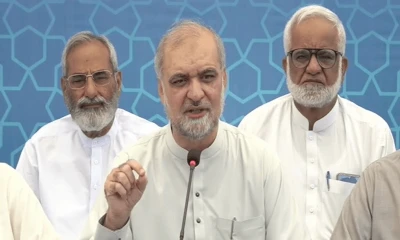
 Pakistan 1 day ago
Pakistan 1 day agoJI announces march against govt on May 16
-
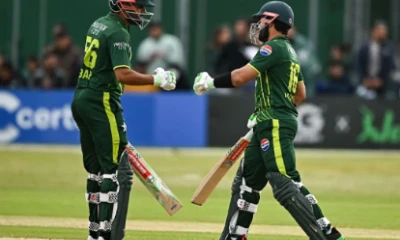
 Sports 1 day ago
Sports 1 day agoPakistan win T20I series against Ireland by 2-1
-
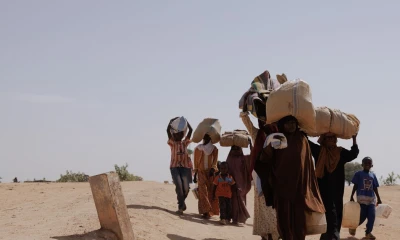
 Regional 1 day ago
Regional 1 day agoArmed groups are likely committing ethnic cleansings and atrocities in Darfur — again
-
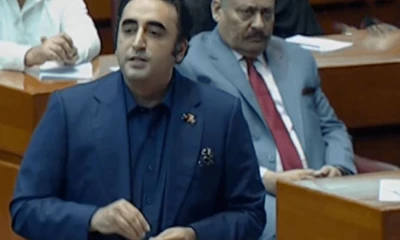
 Pakistan 14 hours ago
Pakistan 14 hours agoBilawal takes jibe at PTI for inviting ‘interference’ from same elements it ‘lectures'
-

 Pakistan 1 day ago
Pakistan 1 day agoDubai Property Leaks expose Pakistani elite with assets worth $11bn
-

 Pakistan 2 days ago
Pakistan 2 days agoECP suspends all additional reserved seats across Pakistan

